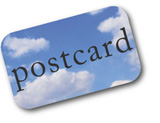
Moscow

VIVEurope 2008 in Moscow provided
an opportunity to incorporate the emerging
Eastern European market into the biannual
livestock and poultry trade show. Of the more
than 5,500 visitors from 70 countries who
attended, many were from the Ukraine and
Belarus and most represented poultry farms.
In a talk on coccidiosis, Dr. Luciano Gobbi, an
Italy-based veterinarian and technical service
manager with Intervet/Schering-Plough
Animal Health, explained how coccidiosis
vaccination has evolved from a solitary
control method into a broad management tool.
Anticoccidials remain the mainstay of
coccidiosis control, yet coccidiosis remains
widespread, costing poultry producers
more than any other disease, Gobbi said.
A primary problem with anticoccidials
is coccidial resistance resulting from
overuse of the products. However, Gobbi
presented evidence demonstrating how
rotating a coccidiosis vaccine with
anticoccidials restores ionophore sensitivity
and yields bird performance within
normal range.
Coccidiosis vaccination has other
advantages. It complements flock thinning —
the practice of periodically removing some
birds, usually females, leaving the whole
house to grow larger males — because
no withdrawal feed or withdrawal time is
needed; producers can pull light or heavy
birds as needed to meet market demand.
Coccidiosis vaccination also simplifies life
at the feed mill; there’s no need to clean
equipment to prevent unwanted carryover
of anticoccidials. Producers are also relieved
of concerns about anticoccidial residues in
broiler meat, he said.
Back to North American Edition (#2)










